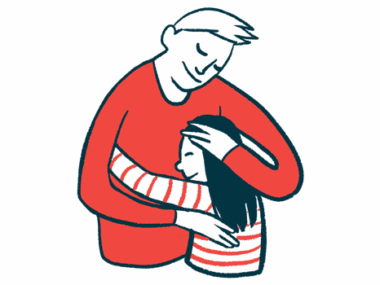Patients: Earlier disease diagnosis, better communication needed in EB
Interview study hears concerns of adult patients, parents of EB children
Written by |

Along with parents of children with epidermolysis bullosa (EB), adults with the rare disease in the Netherlands urged access to a quicker diagnosis and more accurate prognosis, as well as broader public awareness and education about the condition, in a new interview-based study.
“The EB community should work towards ever faster diagnosis, increased public awareness of EB, and continued proactive education of clinicians,” the researchers wrote in noting the concerns voiced by patients and parents.
The interviewed patients and family members also stressed the importance of sensitive and clear communication by healthcare providers, suggesting that clinicians be considerate in balancing “information and cautious use of value-connoted wording,” the researchers added.
“A timely and precise EB diagnosis is crucial to improve emotional outcomes of individuals confronted with EB,” the team wrote.
The study, “Navigating the diagnostic journey of epidermolysis bullosa – a qualitative study on the lived experiences and needs of parents and patients,” was published in the British Journal of Dermatology.
Quicker disease diagnosis needed in EB, patients and caregivers say
EB, a group of rare skin disorders, causes a patient’s skin to become very fragile and likely to blister and wound in response to trauma or friction. Clinicians may suspect EB from the skin’s appearance, but diagnosis requires a skin biopsy to remove a tissue sample for examination or a genetic test.
“Advances in EB diagnostics lead to quicker and more precise diagnosis of EB, which raises the question of how patients and parents feel about current EB diagnostic trajectories,” the researchers wrote.
To better understand the challenges faced by patients and their caregivers, and how these could be better addressed, the researchers listened to the experiences and needs of adults and parents of children with EB as they went through the diagnostic process.
This study describes the lived experience and needs of parents of children and adult patients during the diagnostic process of EB.
Interviewed were 18 parents of 13 children with EB and eight adult patients, all from the Dutch EB Registry. Through video calls, the respondents discussed their journey to a disease diagnosis and how it affected their lives.
“This study describes the lived experience and needs of parents of children and adult patients during the diagnostic process of EB,” the researchers wrote.
After searching for common patterns following the interviews, the team separated the respondents into three main groups, one of which was adults with localized EB. The other two groups comprised parents of children with the condition, divided into those in which the patients had severe forms of EB and more widespread symptoms — the junctional EB and recessive dystrophic EB disease types — and those with milder forms of EB, namely epidermolysis bullosa simplex and dominant dystrophic EB.
The diagnostic process brought about a range of emotions, from desperation and uncertainty to relief and understanding once a diagnosis was made. The need for a fast and accurate diagnosis was particularly important for parents of children with severe symptoms.
“It just gives a sense of feeling powerless and not having control over the situation. That uncertainty drives you crazy, and you start thinking about all sort of scenarios,” said a parent of a patient with junctional EB.
But even patients with less severe symptoms were pleased to get a disease diagnosis.
“Actually, I already suspected the diagnosis of EB, but now it’s confirmed. Consequently, I got a car with air conditioning, so my feet can cool down,” an adult with EB simplex said.
Patients, caregivers call for use of more careful terminology
Both parents and adult patients highlighted problems with current clinical practices. Many felt that the way clinicians talk about the severity of EB could negatively impact their perception of the disease, their willingness to seek healthcare, their participation in research, and their involvement in peer support groups.
“We also strongly recommend omitting value-connotated terminology from future EB reclassifications and incorporating parent and patient perspectives alongside expert opinions,” the scientists wrote. “This will ensure that future terminology aligns with molecular and clinical aspects, while also recognizing implications for parents’ and patients’ emotional and cognitive stress-coping processes.”
Adults with EB also talked about the profound impact of the disease on their lives, from reduced mobility due to painful blisters to social exclusion resulting from EB-related limitations.
“It is very difficult to find a job as I simply can’t wear any shoes […] and in my job sector people even have to wear steel-toe shoes,” said a patient with recessive dystrophic EB. Another added: “Because it’s hidden under my clothes, people don’t understand and tell me I’m slow […] and then I stay quiet and just let them think I’m sluggish.”
Overall, the study showed an urgent need to speed up the diagnostic process for EB and to increase public awareness and education about the disease. Clinicians should communicate clearly and avoid language that might carry negative connotations, the researchers suggested.
“Our findings highlight the relevance of tailored communication and care, by revealing the different perception of an EB diagnosis for parents and patients,” the researchers wrote.







